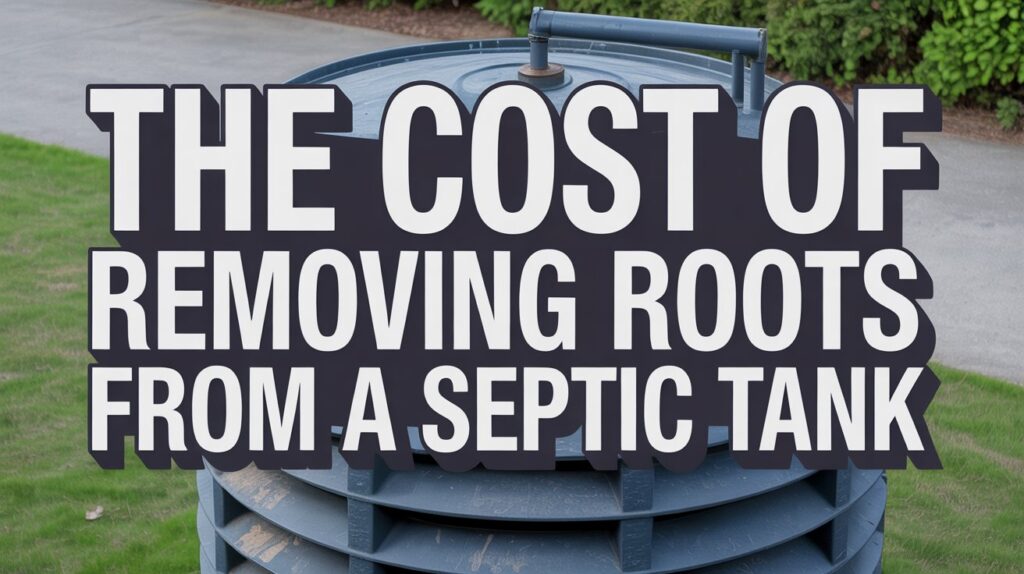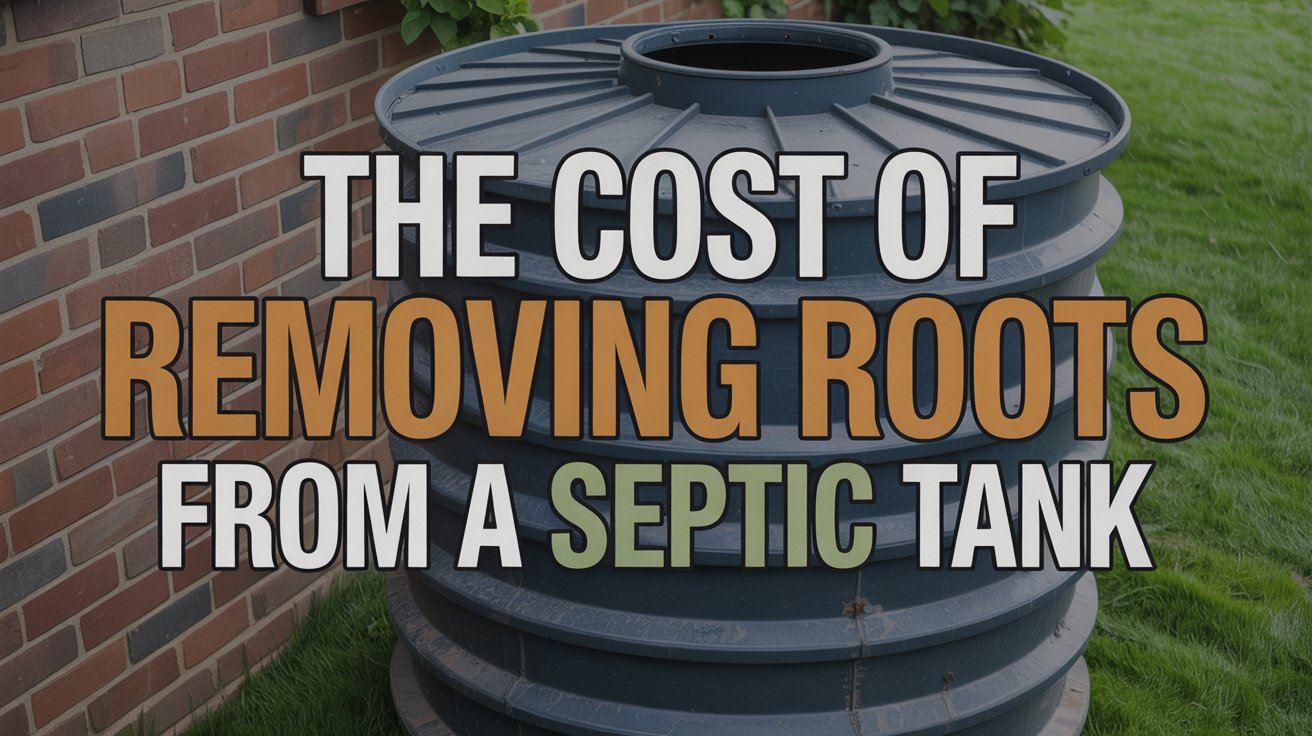Have you ever wondered what it might cost to remove roots from your septic tank? It’s a concern that may not cross your mind until you find yourself facing the inconvenience and potential damage caused by invasive roots. Understanding both the process and cost involved is crucial, whether you’re a homeowner experiencing issues or someone eager to avoid them in the future.
Understanding the Problem
How Do Tree Roots Enter Your Septic System?
Trees are beautiful additions to any property, but their roots can become a major problem for septic systems. Roots are naturally attracted to moisture, and your septic system is a prime target. Over time, tiny fissures or cracks in your pipes can allow roots to infiltrate. These roots can then grow and eventually cause blockages, resulting in inconvenient and costly damage.
Signs That Roots Have Invaded Your Septic Tank
You might not immediately realize that roots are causing an issue, but there are several signs that can alert you to a problem. Here are a few indicators:
- Slow Drains: If all your drains are slower than usual, it could indicate a blockage.
- Unpleasant Odors: Foul smells near your tank can be a warning sign of damage.
- Lush Vegetation: Surprisingly green patches or rapid plant growth above your septic system could mean roots are taking advantage of leaks.
- Frequent Backups: If you experience frequent septic backups, roots might be clogging the system.
Evaluating the Costs Involved
General Cost Breakdown
The cost to remove roots from your septic tank can vary significantly depending on a variety of factors. On average, you might expect to pay anywhere from $100 to $600, but this range can fluctuate based on the complexity and severity of the problem.
Factors Affecting Cost:
- Extent of Root Invasion: Minor invasions are usually cheaper to handle compared to a severe root infestation.
- Location: Geographical location can affect labor costs and availability of specialists.
- Method of Removal: Whether you opt for chemical treatments or mechanical removal impacts the overall cost.
- Professional Services: Hiring experts for the job often ensures quality results, but it’s more expensive than DIY solutions.
Cost Comparisons of Different Methods
| Method | Average Cost | Description |
|---|---|---|
| Chemical Treatment | $50 – $150 | A non-invasive method involving chemical root killers. Suitable for minor issues. |
| Mechanical Removal | $200 – $600 | Involves using augers or high-pressure water jets to physically remove roots. Better for severe problems. |
| Excavation & Repair | $1,000 – $4,000+ | For extreme cases, full excavation and pipe repair might be necessary. |
DIY vs. Professional Services
DIY Approaches
Choosing a DIY method can save money but might not always achieve the durable results you need. Chemical treatments can be a quick fix for minor issues but may require repeated applications. It’s crucial to research thoroughly and follow all safety guidelines if you choose this route.
Professional Services
Opting for professional services can be more expensive but usually offers comprehensive and lasting solutions. Professionals come with the required expertise, proper equipment, and experience to deal effectively with even the most challenging scenarios.

Long-Term Solutions and Prevention
Techniques to Prevent Root Invasion
Preventing root invasion is often more affordable and manageable than dealing with the aftermath. There are several ways to protect your septic system from roots:
- Plant Wisely: Keep trees and shrubs at a safe distance from your septic system.
- Barrier Installation: Consider installing physical barriers using materials like metal or plastic to prevent root spread.
- Regular Inspections: Conduct regular inspections to catch early signs of root invasion.
- Water-Smart Landscaping: Implement drip irrigation or strategic watering practices to keep roots away from your septic system.
Importance of Regular Septic Tank Maintenance
Regular maintenance is key to ensuring your system functions well over the long term. Scheduling consistent inspections and pump-outs can help detect issues early, prevent damage, and ultimately save you costs associated with repairs.
Considering Environmental Impact
Environmentally Friendly Root Removal
When addressing root issues, consider opting for environmentally friendly practices. Mechanical removal methods are often less harmful to the surrounding ecosystem compared to harsh chemicals.
Sustainable Practices
Incorporating sustainable practices in your septic system management not only protects your investment but also the environment. Techniques like conserving water and responsibly using chemicals can prevent unnecessary harm and ensure the longevity of your system.
Making an Informed Decision
Consulting with Experts
Before settling on a solution, it’s wise to consult with experts. They can provide valuable insights into the most cost-effective and efficient methods tailored specifically to your situation.
Weighing Your Options
Cost is always an important consideration, but it’s not the only factor. Weighing the immediate savings of a DIY fix against the potential recurring problems can help you decide whether professional intervention is worth the extra expense.
Conclusion
Understanding the cost of removing roots from a septic tank is just one part of maintaining a functional and efficient septic system. By staying informed, taking preventive measures, and knowing when to call in professional help, you can protect your system—and your wallet—from the potentially severe impacts of root invasion. Investing time and resources into proper care today can prevent significant headaches and expenses in the future. So, consider your options, assess your situation, and take steps to safeguard your system.

